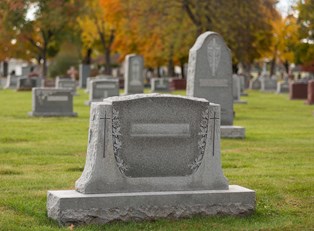Planning a funeral is never easy. But planning ahead is better than waiting for the need to arise. Most people know very little about funeral practices and terms. Here is a list that can help you become more informed in preparation for making clear choices when the time comes.
- Burial insurance policy: insurance coverage specifically to cover the costs of a funeral and burial expenses, including the purchase of a grave itself, along with opening for the burial and sealing it afterward.
- Casket: rectangular box in which the body of the deceased is shown during calling hours or interred in burial.
- Coffin: six-sided box in which the body is kept for viewing or burial.
- Cremating: process of exposing the body of the deceased to heat to reduce the remains to ashes that may be released in nature as in a woodland area or over open water, buried in a coffin, or kept in an urn at a loved one's home.
- Cremation products: urns in which the ashes of a deceased person are placed for burial or storage, as well as pillars or benches that may be preferred as the final resting place of the ashes. Cremation containers can have simple or elegant designs based on the preference of family members unless the deceased made a prior selection as part of a funeral plan.
- Crypt: underground vault or cavern, often beneath a church floor, where the deceased may be laid to rest, often in shelf-like alcoves or on natural or man-made slabs.
- Funeral director: person who makes funeral arrangements by working with the loved ones of the deceased and may handle the embalming or cremation process unless it is performed by other employees.
- Funeral fees: cost of preparing the remains for burial or cremation, arranging a funeral service, transporting the remains to the cemetery or releasing the ashes to the family, coordinating grave preparations, and overseeing the burial. Other services may be included as well.
- Funeral home: also known as mortuary, the dwelling-like structure that often features décor that is comfortable and residential in style. It serves as the location for calling hours for family members and friends of the deceased. Usually the mortician's offices and embalming or cremation facilities are located on the premises, along with burial products.
- Headstone: gravestone that is placed at the head of the person's burial site to identify the location.
- Mausoleum: free-standing building that houses coffins of deceased persons so that remains can be stored above ground rather than underground.
- Mortician: person associated with mortuary services provided by a funeral home. The mortician may or may not serve as the funeral director or may be one of the funeral home employees.
- Obituary: published death notice that usually appears in a newspaper or other print or digital publication prepared by the family, sometimes assisted by the funeral director.
- Tombstone: stone or a marker that is placed at the front of a tomb.
Understanding the meaning of these terms can help to remove some of the anxieties associated with funeral preparations. It may be helpful to contact a local funeral director to get more information about services and costs so it won't seem so confusing or overwhelming when the services are needed.



